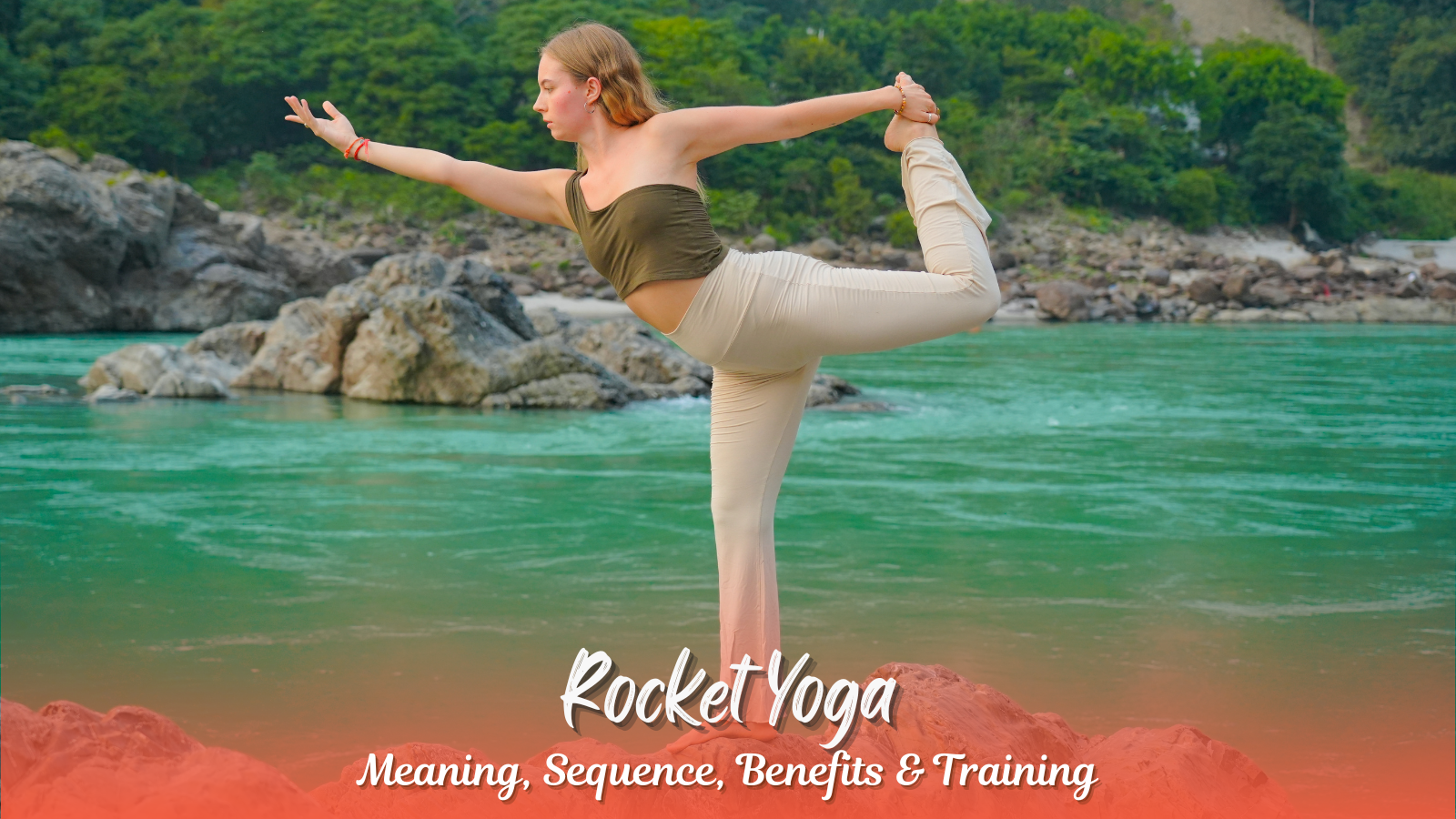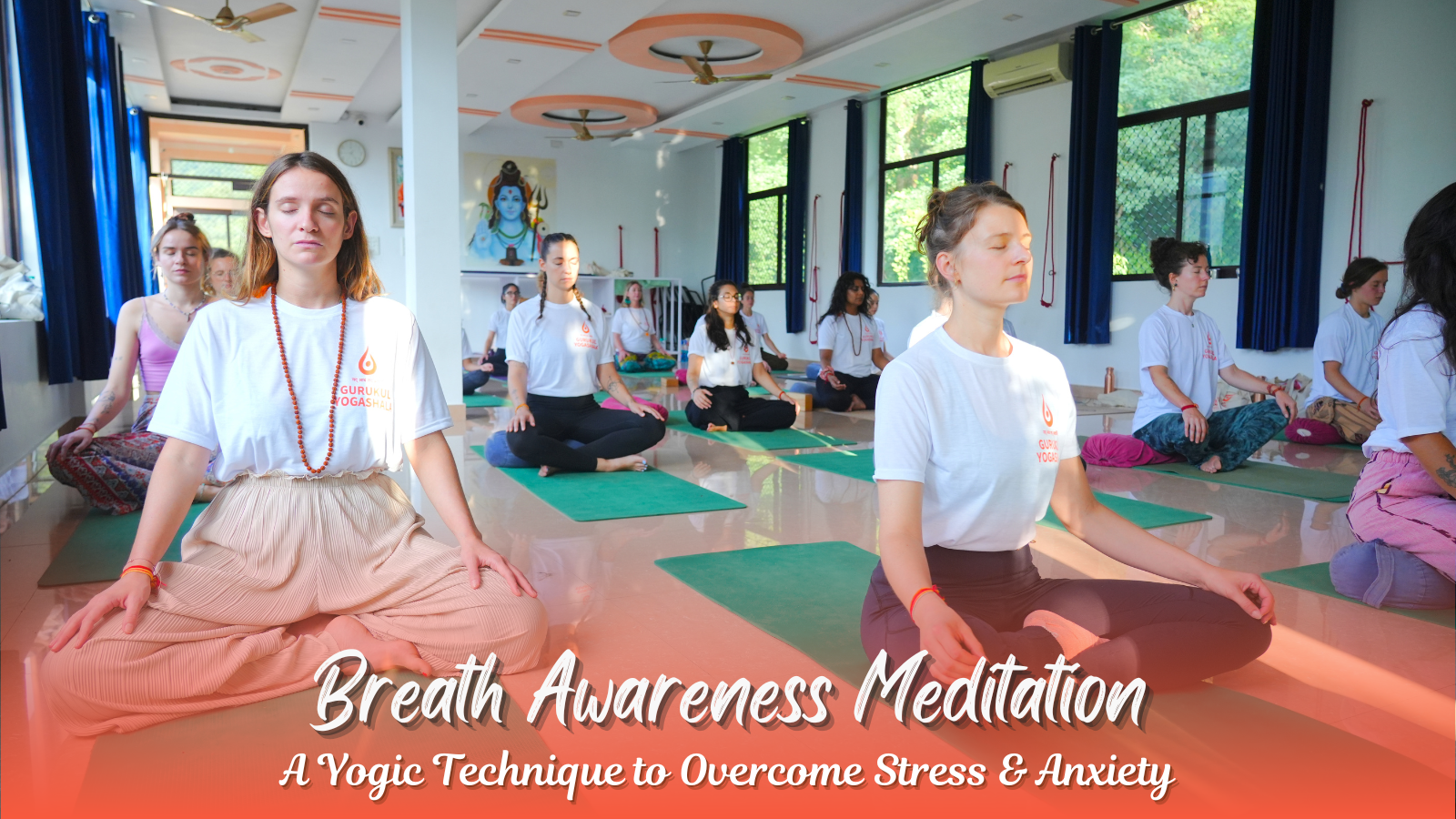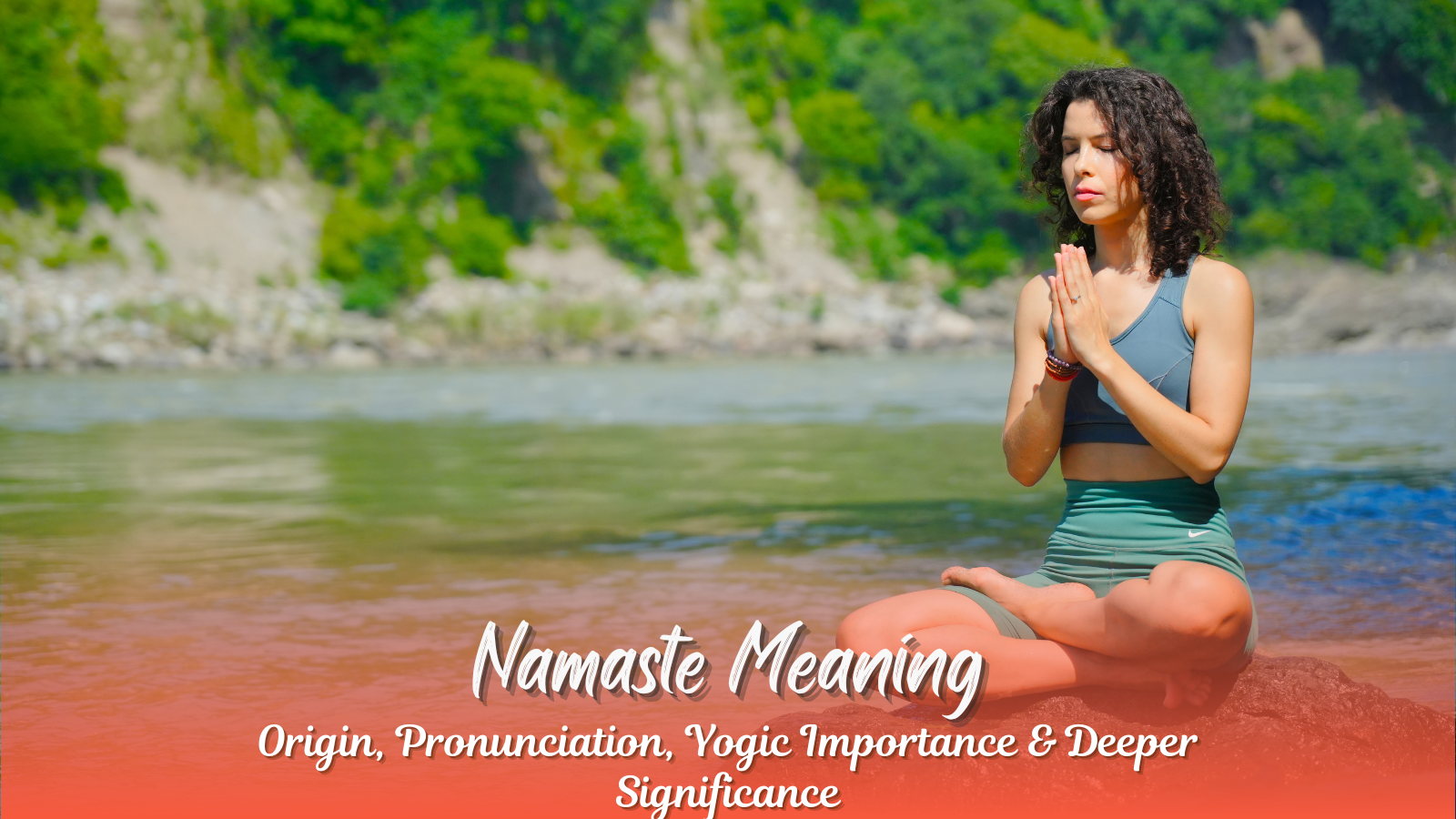Pushan Mudra is one of the most therapeutic and scientifically recognized hand mudras in yoga. Known for its ability to enhance digestion, balance the nervous system, regulate energy flow and promote emotional stability, this mudra is widely practiced across the world.
In traditional yogic texts, mudras are described as “gestures that redirect energy flow within the body.” Pushan Mudra specifically governs the digestive fire (Agni) and supports the functioning of the solar plexus, making it a transformative practice for anyone struggling with digestive discomfort, stress-related eating disorders, or sluggish metabolism.
At Gurukul Yogashala, a traditional yoga school in rishikesh, Pushan Mudra is taught both in yoga teacher training in rishikesh and therapeutic healing sessions to help students understand its deep physiological and energetic benefits.
What Is Pushan Mudra? (Meaning & Yogic Context)
The word Pushan in Sanskrit means “the nourisher”, referring to the Vedic deity Pushan, who governs the digestive system, nourishment, and solar energy.
Pushan Mudra is a two-handed mudra, where each hand performs a slightly different gesture. This unique configuration helps the body manage both:
- Assimilation of nutrients
- Elimination of waste and toxins
Because of this dual action, Pushan Mudra is often referred to as the “digestive mudra” or “mudra for metabolism and gut health.”
It is commonly practiced during:
- Yoga therapy sessions
- Pranayama
- Meditation
- Stress-relief practices
- Post-meal relaxation
- Cleansing kriyas
- Weight-loss programs
How to Do Pushan Mudra (Step-by-Step Instructions)
Pushan Mudra uses different fingers on each hand because digestion has two phases—receiving and eliminating.
Position for the Right Hand (Receiving Phase)
This gesture supports the intake of nutrients and stimulates digestive energy.
- Touch the index finger (Jupiter) and middle finger (Saturn) to the thumb
- Keep the ring finger and little finger extended
Position for the Left Hand (Elimination Phase)
This gesture activates the removal of waste from the body.
- Touch the middle finger and ring finger to the thumb
- Keep the index finger and little finger extended
Body Position
- Sit comfortably in Sukhasana, Vajrasana, Padmasana, or on a chair
- Keep the spine upright
- Rest your hands on the knees
- Close your eyes
- Breathe deeply (preferably deep belly breathing)
Duration
- Minimum: 5 minutes
- Therapeutic practice: 10–20 minutes
- For chronic digestive issues: 2–3 sessions a day
Pushan Mudra Benefits
Pushan Mudra impacts the digestive system, nervous system, and energy channels (Nadis).
1. Improves Digestion Naturally
This mudra stimulates the solar plexus, digestive organs, and digestive enzymes.
It helps with:
- Indigestion
- Bloating
- Gas
- Slow metabolism
- IBS
This is why many students at Gurukul Yogashala practice it after yogic meals during yoga teacher training in Rishikesh.
2. Boosts Metabolism and Gut Fire (Agni)
According to Ayurveda, weak digestive fire leads to:
- Toxins (Ama) buildup
- Weight gain
- Sluggishness
- Emotional heaviness
Pushan Mudra activates the Manipura Chakra and strengthens metabolic fire.
3. Pushan Mudra for Digestion & Gut Health
This is the most important and well-known benefit.
It helps regulate:
- Stomach acid
- Intestinal movement
- Bile secretion
- Enzyme release
- Nutrient absorption
Perfect for individuals who experience discomfort after meals.
4. Pushan Mudra for Weight Loss
Weight gain often comes from:
- Slow digestion
- Stress eating
- Emotional imbalance
- Hormonal fluctuations
- Poor metabolic function
By strengthening digestion and relaxing the nervous system, this mudra indirectly supports healthy, natural weight loss.
5. Relieves Nausea, Vomiting & Travel Sickness
Pushan Mudra calms the stomach and reduces discomfort during:
- Motion sickness
- Dizziness
- Acid reflux
- Post-meal heaviness
6. Reduces Stress & Anxiety
The mudra activates the parasympathetic nervous system, promoting:
- Calmness
- Clarity of mind
- Emotional grounding
- Balanced energy
7. Improves Breath Quality During Pranayama
Pushan Mudra pairs beautifully with:
- Dirgha Pranayama
- Nadi Shodhana
- Ujjayi
- Bhastrika (advanced)
It enhances breath awareness and increases oxygen flow.
8. Harmonizes Prana Vayu and Apana Vayu
These two vital energies govern:
- Digestive strength
- Gut movement
- Circulation
- Mental clarity
Balancing these two creates emotional stability and physical wellness.
The Science Behind Pushan Mudra
From a physiological viewpoint, Pushan Mudra works through:
- Neuromuscular stimulation
Touching specific fingers activates nerve pathways that influence digestion.
- Vagus nerve activation
This nerve controls heart rate, digestion, and relaxation.
- Improved diaphragmatic breathing
Better oxygenation supports metabolic processes.
- Hormonal balance
Reduces cortisol (stress hormone) → better digestion.
- Enhanced blood circulation
Supports organ functioning.
Medical research shows that mudras may influence the brain’s electrical activity, supporting therapeutic outcomes.
This is why traditional yoga schools in Rishikesh, such as Gurukul Yogashala, teach Pushan Mudra as part of yogic therapy and lifestyle programs.
When Should You Practice Pushan Mudra?
It is especially recommended:
- After meals
- Before meditation
- During stress or anxiety
- When experiencing stomach discomfort
- Before sleep
- During long travel
- With pranayama sessions
Performing it 30 minutes after eating helps digestion significantly.
Who Should Avoid Pushan Mudra? (Contraindications)
Pushan Mudra is very safe, but caution is needed if:
- You have diarrhea
- You are extremely dehydrated
- You have serious gastrointestinal disorders (consult your doctor)
- You feel dizzy during practice
- You recently underwent abdominal surgery
Pregnant women can practice it but under the guidance of a trained yoga teacher.
Pushan Mudra in Yoga Philosophy
According to yogic texts, Pushan Mudra activates the Manipura Chakra—the center of:
- Power
- Confidence
- Digestion
- Transformation
A healthy Manipura Chakra improves:
- Self-esteem
- Decision-making
- Motivation
Thus Pushan Mudra supports not just physical digestion, but emotional digestion as well.
Pushan Mudra & The Five Prana Vayus (Advanced Yogic Insight)
In traditional Hatha Yoga, the body is governed by five major pranic forces called Pancha Prana Vayu. Each Vayu controls a different physiological and energetic function.
Pushan Mudra is unique because it influences two major Vayus simultaneously:
1. Samana Vayu (Digestive Fire & Assimilation)
Located in the navel region, Samana Vayu governs:
- Digestion
- Absorption
- Metabolic heat
- Distribution of nutrients
Pushan Mudra strengthens this Vayu, stabilizing the digestive system and enhancing the body’s ability to assimilate food, energy, and even thoughts.
2. Apana Vayu (Elimination & Detoxification)
Anchored in the pelvic region, Apana Vayu governs:
- Elimination of waste
- Menstrual flow
- Reproductive balance
- Detoxification
Pushan Mudra stimulates Apana Vayu, helping the body cleanse toxins and maintain regular bowel movements.
Why this is important?
Because balanced Samana + Apana results in:
- Healthy digestion
- Regular detoxification
- Stable emotions
- Strong immunity
- Clarity of mind
No other hand gesture works so precisely with these two systems simultaneously.
This is why in the advanced sessions at Gurukul Yogashala, Pushan Mudra is taught as a therapeutic yogic tool, not just a mudra.
The Psychology Behind Pushan Mudra
Modern psychology agrees that digestion and emotions are deeply connected because of the gut–brain axis.
Pushan Mudra helps regulate this connection in the following ways:
1. Reduces Stress-Triggered Digestive Issues
Stress often causes:
- Heartburn
- Constipation
- Loose motions
- IBS
- Stomach knots
Pushan Mudra activates the parasympathetic system (rest-and-digest mode) that calms the brain and stomach simultaneously.
2. Improves Emotional Digestion
According to yogic philosophy, the solar plexus (Manipura) is the center for:
- Willpower
- Confidence
- Decision-making
- Emotional processing
Pushan Mudra helps one “digest” emotional experiences—especially grief, fear, anger, guilt, and anxiety.
3. Healing for People With Emotional Eating
People who eat due to:
- Anxiety
- Stress
- Loneliness
- Overwhelm
benefit deeply from Pushan Mudra.
It creates emotional grounding and reduces cravings.
Therapists often pair it with mindful breathing for deeper healing.
Pushan Mudra & Ayurveda
Pushan Mudra is highly recommended in Ayurveda for balancing:
Vata Dosha
Vata aggravation causes:
- Gas
- Bloating
- Irregular digestion
- Constipation
- Anxiety
Pushan Mudra calms Vata and stabilizes nervous energy.
Kapha Dosha
Kapha aggravation causes:
- Sluggish digestion
- Slow metabolism
- Weight gain
- Emotional heaviness
- Lethargy
Pushan Mudra stimulates Agni (digestive fire), helping the body burn fat and eliminate toxins.
Mild effect on Pitta
While it aids digestion, it does not overheat the body.
This makes it safe for Pitta-dominant people as well.
At Gurukul Yogashala, students are trained to pair Pushan Mudra with:
- Herbal teas
- Ayurvedic detox routines
- Yogic diet
- Pranayama
- Meditation
This holistic integration enhances the mudra’s benefits significantly.
Pushan Mudra for Yogic Lifestyle & Ayurveda
Ayurveda teaches that digestion is the root of all health. Pushan Mudra:
- Increases digestive fire (Agni)
- Reduces toxins (Ama)
- Balances Vata and Kapha dosha
- Supports good metabolism
It is widely used in Yogic Therapy and Ayurvedic healing.
FAQs About Pushan Mudra
1. What is Pushan Mudra?
Pushan Mudra is a yogic hand gesture that supports digestion, metabolism, and energy balance through different finger positions on each hand.
2. How long should I practice Pushan Mudra?
5–20 minutes per session. You can practice it multiple times a day.
3. Can Pushan Mudra help with digestion?
Yes! It is one of the best mudras for digestion, bloating, gas, slow metabolism, and post-meal discomfort.
4. Does Pushan Mudra help in weight loss?
Indirectly yes—by improving digestion, metabolism, and reducing emotional eating tendencies.
5. Can beginners practice Pushan Mudra?
Absolutely. It is simple, safe, and effective for beginners.
6. Can I practice it after eating?
Yes, this is the most beneficial time to practice.
7. Is Pushan Mudra safe during pregnancy?
Generally yes, but pregnant women should practice under expert guidance.
8. What is Pushan Mudra used for in yoga?
For digestion, energizing Manipura Chakra, improving pranayama, healing stress, and balancing the body’s energies.
Conclusion: Why Learn Mudras Like Pushan Mudra at Gurukul Yogashala
Pushan Mudra is a powerful yet simple yogic technique that improves digestion, enhances metabolic fire, reduces stress, balances energy flow, and supports weight loss naturally. When practiced consistently, it strengthens both physical and emotional wellbeing.
At Gurukul Yogashala, an authentic yoga school in rishikesh, students learn Pushan Mudra as part of a complete yogic lifestyle that combines:
- Traditional philosophy
- Ayurveda
- Pranayama
- Yogic therapy
- Authentic teaching methods
Whether you join a short course or enroll in the 200 hour yoga teacher training in Rishikesh, you will gain deep expertise and practical understanding of yogic mudras, breathwork, and therapeutic healing. Gurukul Yogashala’s programs are ideal for anyone seeking comprehensive yoga teacher training in Rishikesh rooted in ancient wisdom and real-world experience.











